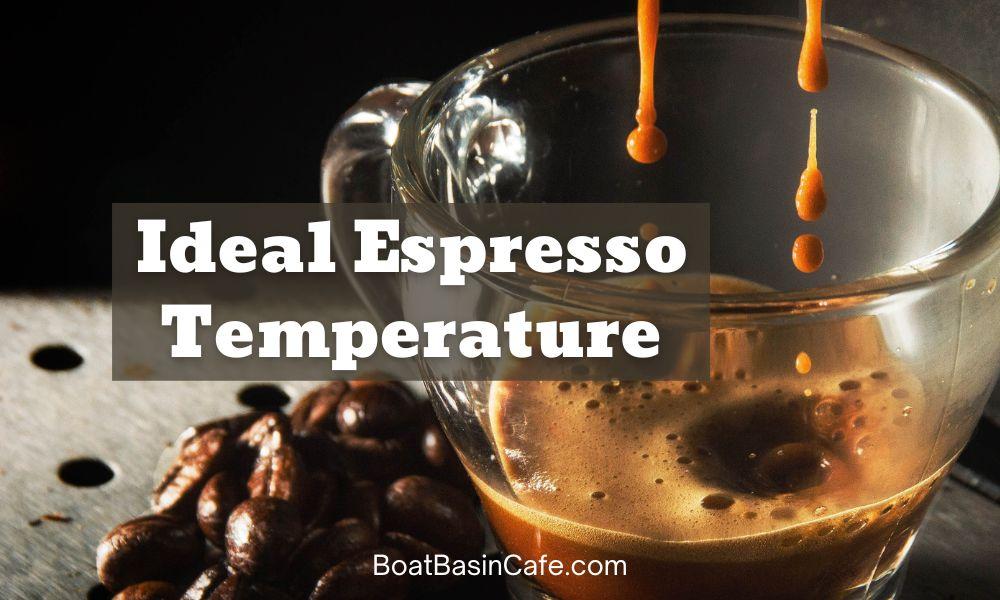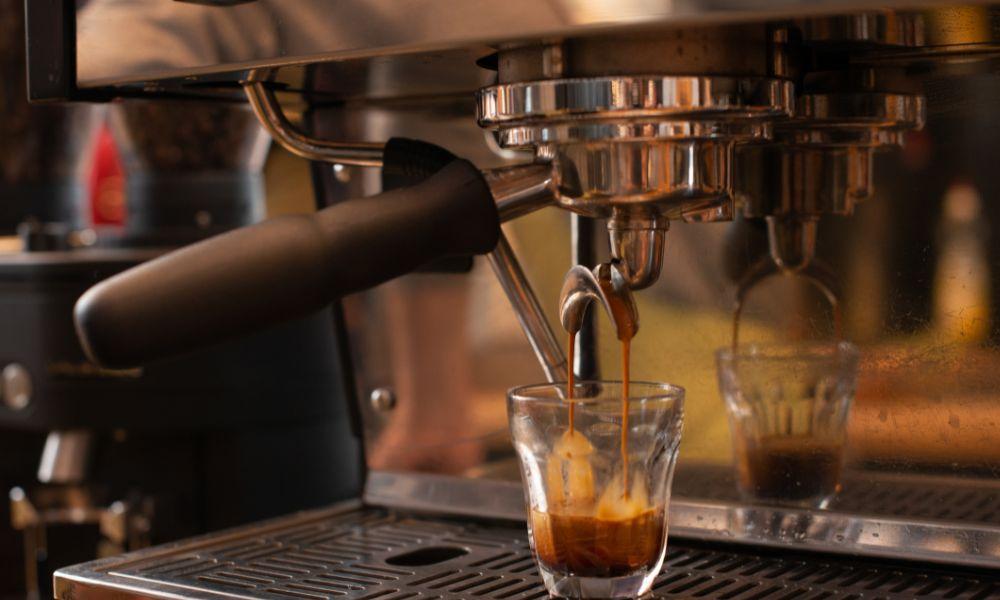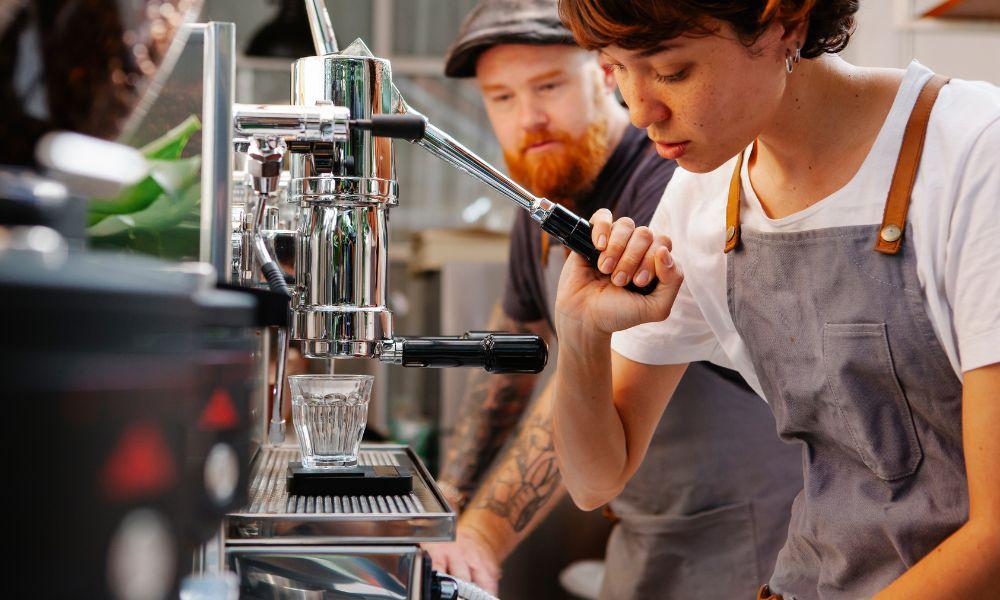As a passionate coffee lover and expert in the field, I know firsthand the importance of achieving the perfect espresso temperature. The temperature of the espresso shot can make or break the flavor, aroma, and crema, resulting in either a balanced and flavorful shot or a bitter and burnt-tasting one.
Through years of experience and experimentation, I have learned the best practices for achieving the ideal espresso temperature. In this article, I will share my knowledge and expertise on the science of espresso temperature, the factors that affect it, and how to achieve consistency in producing high-quality espresso shots.

The Science of Espresso Temperature
The extraction of espresso involves a complex chemical process that requires precise temperature control. During the extraction process, hot water is forced through finely ground coffee beans under high pressure, dissolving and extracting coffee oils, sugars, and flavors.
Temperature plays a critical role in the extraction process because it affects the chemical reactions that occur between the water and the coffee. At high temperatures, the coffee oils can become over-extracted, resulting in a bitter and burnt taste. At low temperatures, the coffee can be under-extracted, resulting in a weak and sour taste.
In addition to affecting the taste, temperature also affects the aroma and crema of the espresso. The crema is the frothy layer of coffee that forms on top of the espresso shot. It is created by the emulsification of oils and gases during the extraction process. The ideal temperature range for creating a rich and creamy crema is between 195°F to 205°F (91°C to 96°C).
It is important to note that the ideal temperature range can vary depending on the type of coffee bean, roast level, and brewing method. Therefore, it is crucial to adjust the temperature accordingly based on these factors to achieve the best possible taste and crema.
Factors Affecting Espresso Temperature

Several variables can affect the temperature of an espresso shot, including water quality, machine calibration, and barista technique. Understanding these variables and how to control them is essential for ensuring consistent temperature in espresso shots.
Water Quality
Water quality can affect the temperature of an espresso shot. Hard water with high mineral content can result in a build-up of limescale, affecting the machine’s heating elements and temperature control. Using high-quality, filtered water can help to maintain the machine’s temperature and prevent limescale build-up.
Machine Calibration
The calibration of the espresso machine can affect the temperature of the shot. The machine’s heating elements must be calibrated correctly to ensure consistent temperature throughout the brewing process. It is essential to check and adjust the machine’s calibration regularly to maintain optimal temperature control.
Barista Technique

Barista technique can also affect the temperature of the shot. The barista must use the correct grind size, tamping pressure, and brewing time to achieve consistent temperature and extraction. It is essential to train the barista to ensure that they are using the correct technique and are aware of the variables that can affect the shot’s temperature.
Controlling these variables is essential for ensuring consistent temperature in espresso shots. Some tips for controlling these variables include:
- Use high-quality, filtered water to maintain the machine’s temperature and prevent limescale build-up
- Calibrate the machine’s heating elements regularly to ensure consistent temperature throughout the brewing process
- Train the barista to use the correct technique and to be aware of the variables that can affect the shot’s temperature
- Use a thermometer to measure the temperature of the shot and adjust the temperature accordingly
- Pre-heat the equipment before use to ensure that it is at the same temperature as the coffee
By controlling these variables, baristas can ensure that they are brewing espresso shots at the optimal temperature for a balanced and flavorful taste.
Best Practices for Achieving the Ideal Espresso Temperature
Baristas can take several steps to achieve the ideal espresso temperature, ensuring a balanced and flavorful taste.
Preheating Equipment
Preheating the equipment is crucial for achieving the ideal espresso temperature. Preheating ensures that the equipment is at the same temperature as the coffee, allowing for consistent extraction. To preheat the equipment, run hot water through the portafilter, cup, and machine before brewing.
Using the Right Water Temperature
Using the right water temperature is essential for achieving the ideal espresso temperature. The water temperature should be between 190°F to 205°F (88°C to 96°C) to ensure optimal extraction. Using a thermometer to measure the water temperature can help to ensure consistency.
Adjusting Grind Size
Adjusting the grind size is also essential for achieving the ideal espresso temperature. The grind size should be adjusted based on the desired extraction time and the machine’s temperature. A coarser grind will require a higher temperature, while a finer grind will require a lower temperature.
Troubleshooting Temperature Issues
If the temperature of the espresso shot is not consistent, there may be an issue with the machine’s calibration, water quality, or barista technique. To troubleshoot temperature issues, check the machine’s calibration, use high-quality, filtered water, and train the barista to use the correct technique.
Conclusion
In conclusion, the ideal espresso temperature is between 195°F to 205°F (90°C to 96°C). By understanding the science of espresso temperature, the factors that affect it, and how to achieve it, baristas and coffee enthusiasts can create a balanced and flavorful shot of espresso every time.
FAQs
Why is temperature so important in making espresso?
Temperature is essential in making espresso because it affects the chemical reactions that occur between the water and coffee. The ideal temperature range allows for optimal extraction of coffee oils, sugars, and flavors while ensuring that the coffee does not become over-extracted or burnt.
What is the ideal temperature range for making espresso?
The ideal temperature range for making espresso is between 195°F to 205°F (90°C to 96°C).
How can I achieve consistent temperature in my espresso shots?
To achieve consistent temperature in your espresso shots, it is essential to use an espresso machine with temperature control, preheat the equipment, use high-quality water, use freshly roasted coffee beans, adjust the grind size and tamping pressure, and maintain consistent brewing time.
Can the type of coffee bean affect the ideal espresso temperature?
Yes, the type of coffee bean can affect the ideal espresso temperature. Darker roasts require higher temperatures for optimal extraction, while lighter roasts require lower temperatures.
How can I troubleshoot temperature issues with my espresso shots?
If you are experiencing temperature issues with your espresso shots, you may need to check the machine’s calibration, use high-quality, filtered water, and train the barista to use the correct technique. It is also important to adjust the temperature based on variables such as water quality, roast level, humidity, and altitude.